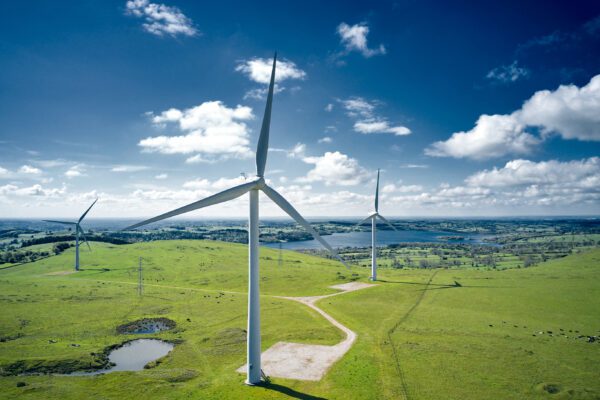
Energy Procurement In 2022 – Q2
Here’s a summary from our energy experts on what’s happened in the energy market for Q2.
Energy procurement during the second quarter of 2022 hasn’t seen much improvement from Q1. With the conflict in Ukraine impacting gas supplies, added bullish pressure due to reduced capacity and increased demand for LNG in Asia, prices have continued to soar as businesses prepare for Winter 22-23. Here’s a summary from our energy experts on what’s happened in the energy market for Q2.
What’s happening in the energy procurement market for Q2
Through Q2-22, short-term UK gas contracts have risen considerably, increasing between 11% and 67%. In part, this increase has been spurred by events stemming from the Russia and Ukraine conflict, with some countries such as Poland and Bulgaria being cut off from Russian gas supplies and reduced flows via two gas pipelines.
An explosion at major U.S. Liquified Natural Gas (LNG) facility added to gas prices going up with the outage being extended to Sep-22 and reduced capacity until the year end. An increase LNG demand in Asia, especially Japan, has worsened the reduced global LNG supply and shown the UK’s greater exposure to the global LNG market following the diversification away from Russian gas supplies.
UK contracts from this winter onwards have followed a similar trend, with contracts gaining between 47% and 73%. The Winter-22 (Oct22 – Mar23) contract has largely come under pressure from similar drivers, with limited global gas supplies being a primary driver. The Winter-22 and Summer-23 contracts have increased because of the new EU storage targets of 80% by October and 90% by November, with these targets looking increasingly unlikely to be met following limited global gas supplies.
Short-term UK electricity contracts have risen through Q2-22, increasing between 22% and 78%. This has largely been driven by UK gas prices and increasing gas-fired premiums at a time of growing gas demand. EDF have reduced their nuclear energy output for 2022 and 2023, following warmer temperatures in France and corrosion issues at some nuclear reactors, worsening the impact of higher gas-fired premiums, making the UK more reliant on natural gas for power generation. Coal has also increased by roughly 24% following the high gas-fired premiums, providing additional support to UK electricity contracts and the UK and EU carbon benchmarks which rose by 9% and 5% respectively.
UK electricity contracts for future years have risen following the COP26 meetings and the increase in renewable generation demand, coupled with commodity inflation, causing the costs associated with new wind and solar infrastructure to rise and therefore this has slowed down the rate of renewable installations. EDF has also reduced it’s nuclear output for 2023, increasing demand for gas-fired generation into coming years.
Market outlook
Short-term UK gas contracts are likely to receive the strongest influence from developments surrounding the Russia-Germany Nord Stream 1 pipeline and limited global gas supplies. Flows have returned via this pipeline; however, they are only operating at 20%, with Russia citing turbine issues as the cause. Canada has repaired and returned this turbine, although it is now stuck in transit in Germany with uncertainty remaining over when it will be installed. Russia has also stated another 5 turbines need maintenance, which could see flows reduced for some time with the potential of further supply cuts. Though given the sanctions placed on Russian coal and oil imports, this seems unlikely that Russia will cut off the remaining gas supplies, as it would result in Russia losing a significant revenue stream.
Looking further ahead, UK gas contracts are likely to continue to be pressured by EU and UK plans to diversify away from Russian energy supplies, along with increased exposure to global LNG prices as a result of the outage at the US facility. The obligations made at the COP26 conference could also see an increase in global gas demand.
UK electricity markets are likely to remain supported from UK gas markets, with increasing gas-fired premiums. Lower nuclear output from France is likely to continue to support elevated prices and worsen high gas-fired premiums. Commodity inflation, slowing the rate at which renewable installations can be installed will likely keep prices inflated and increase gas-fired generation demand in the meantime. The upcoming coal embargo due to start in Aug-22 is also likely to magnify high gas-fired premiums and already elevated coal prices.
Navigating your business’ energy
Tensions are still high in the energy market and with any procurement decisions at this time, timing is vital to avoiding fixing at a higher price. How events play out in Q3 will determine the market going into Winter 22-23 and the impact of the Russia Ukraine conflict.
Speaking to an expert who has their finger on the pulse of the energy procurement market can help ensure you have a clear view and support your business in protecting it’s bottom line now and in the future. See how your current procurement strategy is doing and take our procurement score challenge today.
Get in touch today on 01772 689250 or email [email protected].
*This is a review of price action in Q2-22 (01/04/2022 to 30/06/2022), as a result the near curve is Aug-22, Sep-22, Oct-22 and Nov-22. Seasonal contracts looked at are W-22, S-23, W-23 and S-24.










